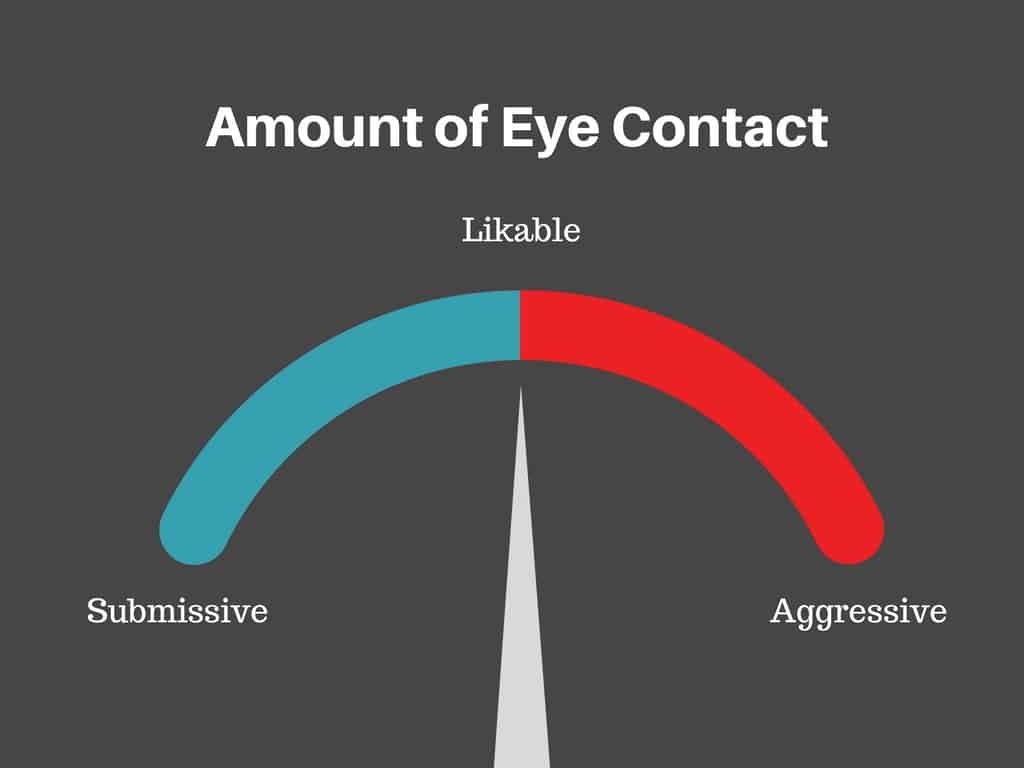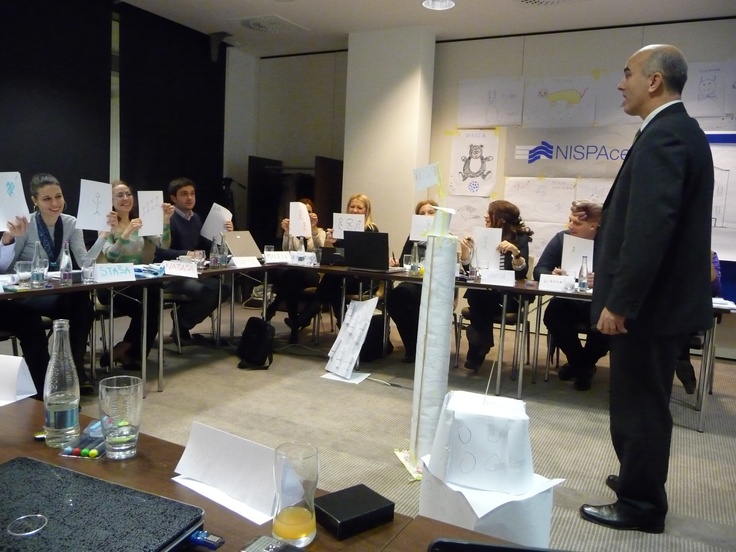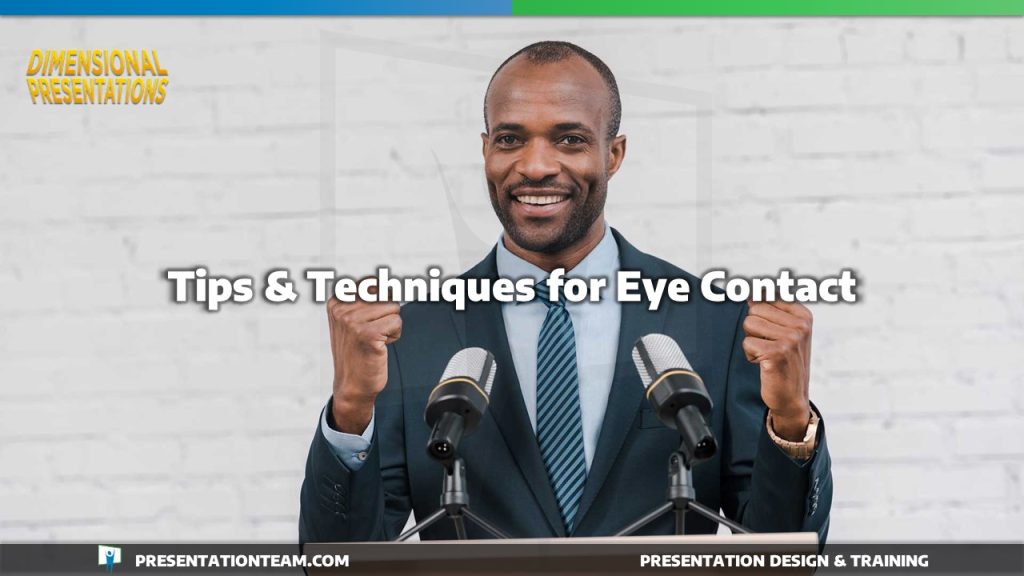Effective communication hinges on more than just words. Strong eye contact plays a crucial role in connecting with your audience, fostering trust, and enhancing the impact of your message. This guide explores the nuances of maintaining eye contact, offering practical techniques and strategies for various situations, from public speaking to everyday interactions.
Understanding the importance of eye contact, coupled with effective techniques, can transform your communication style. This comprehensive guide will delve into the art of connecting with your audience through sustained, meaningful eye contact, covering crucial aspects like overcoming challenges, adapting to different audiences, and leveraging the synergy between eye contact and body language.
Understanding the Importance of Eye Contact
Maintaining strong eye contact is a fundamental aspect of effective communication, significantly impacting audience engagement and connection. It fosters a sense of trust and credibility, influencing how your message is perceived and received. This crucial element goes beyond simple politeness; it’s a powerful tool for building rapport and delivering your message with confidence.
Impact on Audience Engagement and Connection
Strong eye contact creates a direct and personal connection between the speaker and the audience. It conveys sincerity and confidence, making the speaker appear more approachable and trustworthy. The audience feels heard and valued, leading to greater engagement and attentiveness. When speakers make sustained eye contact with individuals in the audience, it demonstrates genuine interest in their thoughts and perspectives.
This reciprocal interaction fosters a sense of shared experience, enhancing the overall communicative experience. Moreover, eye contact helps maintain audience focus and prevent distractions.
Crucial Scenarios for Strong Eye Contact
Maintaining strong eye contact is vital in various communication settings. In public speaking and presentations, it helps build rapport with the audience and keeps them engaged. In interviews, it projects confidence and demonstrates genuine interest in the questions being asked. In casual conversations, it fosters a sense of connection and respect.
Building Trust and Credibility
Consistent and appropriate eye contact plays a significant role in building trust and credibility. It demonstrates sincerity, openness, and a genuine interest in the audience. By making eye contact, speakers project confidence and authority, thereby influencing the audience’s perception of their message and competence. This confidence, in turn, reinforces the message’s credibility.
Negative Consequences of Avoiding Eye Contact
Avoiding eye contact can negatively impact the delivery and reception of a message. It can create an impression of insincerity, nervousness, or even dishonesty. The audience may perceive the speaker as lacking confidence or not being fully present, leading to decreased engagement and trust. This can significantly diminish the impact of the message and hinder the speaker’s ability to connect with the audience.
Impact Table
| Situation | Importance of Eye Contact | Potential Negative Impacts |
|---|---|---|
| Public Speaking | Strong eye contact fosters engagement, builds rapport, and enhances credibility. It maintains audience focus and demonstrates confidence. | Avoiding eye contact can create an impression of nervousness, insincerity, or lack of confidence. This can lead to decreased audience engagement and diminish the impact of the message. |
| Presentations | Sustained eye contact with various audience members demonstrates interest and inclusivity, enhancing the presentation’s impact. | Lack of eye contact can make the presentation seem disjointed or rehearsed, potentially leading to audience disinterest and reduced engagement. |
| Interviews | Direct eye contact during interviews projects confidence and genuine interest in the questions, creating a positive first impression. | Avoiding eye contact can convey a lack of confidence or a lack of interest in the questions, negatively impacting the interviewer’s perception of the interviewee. |
Techniques for Establishing Eye Contact

Effective communication relies heavily on visual cues, and strong eye contact is paramount. It fosters connection, builds trust, and demonstrates engagement with the audience. By understanding and implementing various techniques, speakers can significantly enhance their presentation’s impact and effectiveness.Establishing consistent and natural eye contact requires deliberate practice and mindful application of specific strategies. These techniques are not merely about looking at people; they are about creating a meaningful exchange that conveys engagement and understanding.
This section delves into methods for maintaining eye contact without appearing aggressive or intense, focusing on the art of scanning the audience and connecting with individuals.
Methods for Maintaining Consistent Eye Contact
Maintaining consistent eye contact is crucial for audience engagement. It’s not just about looking at people; it’s about creating a connection that conveys understanding and interest. This can be achieved by employing various techniques, which will be explored below.
Scanning the Audience
To distribute eye contact evenly and avoid appearing overly focused on a single individual, speakers should adopt a scanning technique. This involves moving one’s gaze systematically across the audience, engaging with different individuals and groups. The aim is to create a sense of inclusivity and shared experience, ensuring everyone feels acknowledged. This is often best done by focusing on a specific point, like the center of the audience, then systematically moving around.
Engaging with Different Audience Members
Effective communication involves recognizing that different individuals respond to different nonverbal cues. Using appropriate nonverbal cues can enhance the connection with audience members. A friendly smile, a nod, or a subtle gesture can signal understanding and encourage engagement. A speaker’s demeanor should be approachable and inviting. This involves maintaining a friendly expression and adapting the tone of voice to match the audience’s reactions.
Methods for Maintaining Eye Contact
| Technique | Description | Example | Benefits |
|---|---|---|---|
| Scanning | Methodically moving your gaze across the audience, ensuring everyone feels included. | Start at one side of the room, then systematically move to the other side, checking in with various groups. | Creates a sense of inclusivity and avoids appearing focused on a single person. |
| Sustained Eye Contact | Holding eye contact with an individual for a few seconds, conveying interest and engagement. | Look directly at a specific person, maintaining eye contact for 2-3 seconds before moving on. | Demonstrates engagement and helps build rapport. |
| Nonverbal Cues | Using subtle gestures and expressions to reinforce the message and show engagement. | Nodding in agreement, smiling at positive responses, using hand gestures to emphasize points. | Reinforces verbal communication and creates a more dynamic presentation. |
| Varying Intensity | Adjusting the intensity of eye contact to avoid appearing aggressive or too intense. | Maintain a friendly expression and avoid staring intensely. Use a moderate level of intensity. | Maintains engagement without appearing intimidating. |
Avoiding Aggressive or Intense Eye Contact
Avoiding intense or aggressive eye contact is crucial for building rapport. It’s about establishing a connection, not dominating the room. Maintain a friendly, approachable expression, and avoid prolonged, unwavering gazes. These techniques foster trust and ensure the audience feels comfortable and engaged. A relaxed posture, a calm tone of voice, and open body language are all important factors.
Overcoming Challenges in Maintaining Eye Contact

Maintaining strong eye contact is crucial for effective communication, but it can be challenging for many individuals, particularly when faced with anxiety, nervousness, or large audiences. This section delves into strategies for overcoming these hurdles, empowering presenters to connect with their audience authentically.Overcoming stage fright and nervousness, and adapting to various presentation settings, are essential components of successful communication.
Developing techniques for managing anxiety and fear, coupled with confidence-building practices, can significantly improve a presenter’s ability to make meaningful eye contact.
Strategies for Managing Stage Fright and Nervousness
Effective management of anxiety and fear is paramount in maintaining eye contact. Strategies for reducing anxiety before and during presentations can greatly enhance a presenter’s ability to connect with their audience. These strategies include deep breathing exercises, positive self-talk, and visualization techniques.
- Deep Breathing Exercises: Incorporating deep breathing techniques before and during a presentation can calm the nervous system, reducing physical symptoms of anxiety such as rapid heart rate and shallow breathing. Practicing slow, deep inhalations and exhalations can help center the individual and promote a sense of calm. For instance, inhaling deeply through the nose and exhaling slowly through the mouth can regulate the body’s natural stress response.
- Positive Self-Talk: Replacing negative thoughts with positive affirmations can significantly impact a presenter’s confidence and ability to maintain eye contact. Instead of focusing on potential failures, positive self-talk encourages focusing on strengths and past successes. Examples of positive self-talk include “I am prepared,” “I am confident,” or “I am capable.” This practice empowers the individual, fostering a more positive mindset during the presentation.
- Visualization Techniques: Visualizing a successful presentation, maintaining eye contact with the audience, and feeling confident and comfortable can significantly reduce anxiety and enhance performance. Mentally rehearsing the presentation and visualizing a positive outcome can reduce fear and build confidence.
Building Confidence and Practicing Eye Contact
Building confidence in maintaining eye contact is a gradual process that requires consistent practice. This section Artikels methods for developing and reinforcing this skill.
- Rehearsing in Front of a Mirror: Practicing eye contact in front of a mirror allows individuals to see their own body language and facial expressions, providing valuable insights into how they appear to others. This practice helps them identify areas where improvements are needed and can help build confidence by recognizing positive aspects of their performance.
- Practicing with a Small Group: Presenting to a small group of trusted friends, family, or colleagues provides a supportive environment to practice maintaining eye contact. This controlled environment allows for feedback and adjustments, building confidence in the ability to connect with others.
Methods for Rehearsing Eye Contact
Rehearsing eye contact in various settings is crucial for improving presentation skills. This section Artikels methods for rehearsing eye contact, emphasizing consistency and personalization.
- Practicing with Different Audience Sizes: Rehearsing presentations in front of increasingly larger groups helps develop the skill of engaging with diverse audiences. This gradually builds confidence and helps the individual adjust to the demands of different settings.
- Focusing on Key Individuals in the Audience: Practicing maintaining eye contact with specific individuals in the audience allows the presenter to build a connection with individual audience members. This approach allows the presenter to engage with the audience as a whole, fostering a sense of connection and trust.
Comparison of Techniques to Overcome Stage Fright and Nervousness
| Technique | Description | Benefits | Drawbacks |
|---|---|---|---|
| Deep Breathing Exercises | Slow, controlled breathing techniques | Reduces physical symptoms of anxiety, promotes relaxation | May require practice to become effective |
| Positive Self-Talk | Replacing negative thoughts with positive affirmations | Builds confidence, enhances self-belief | Requires conscious effort and discipline |
| Visualization Techniques | Mentally rehearsing a successful presentation | Reduces anxiety, fosters confidence | Requires consistent practice and visualization skill |
Adapting Eye Contact to Different Audiences
Effective communication relies not only on the clarity of the message but also on the sensitivity and appropriateness of nonverbal cues. This includes adapting eye contact techniques to diverse audiences, acknowledging cultural norms, and understanding the nuances of different settings. A nuanced approach to eye contact enhances connection and fosters a positive reception of the message.Understanding the context and the cultural backgrounds of your audience is crucial for successful communication.
The way eye contact is perceived and interpreted varies significantly across cultures. Different norms regarding direct gaze, duration, and frequency of eye contact exist, impacting the interpretation of the interaction. A speaker’s sensitivity to these differences is vital for building rapport and maintaining a positive atmosphere.
Adapting to Cultural Norms and Sensitivities
Cultural norms play a significant role in how eye contact is perceived. In some cultures, sustained direct eye contact is seen as a sign of respect and engagement, while in others, it can be perceived as aggressive, rude, or even challenging. Understanding these differences is paramount for effective communication across cultures. For example, in many Western cultures, direct eye contact is expected during conversations, signifying attentiveness and honesty.
However, in some Eastern cultures, maintaining prolonged eye contact might be considered impolite or disrespectful. Avoiding prolonged or intense eye contact in such situations can build trust and rapport. Similarly, in some cultures, looking away during a conversation might signify agreement or deference, while in others, it could indicate disinterest or dishonesty. Thus, recognizing these subtle differences is essential to ensure the message is received positively.
Strategies for Engaging Diverse Audiences
When addressing diverse audiences, adapting eye contact strategies is vital for successful communication. Different audience sizes necessitate different approaches. For a large audience, scanning the room, focusing on various sections, and using visual cues to connect with different parts of the room can be beneficial. Maintaining a consistent level of engagement across the entire room is important to ensure everyone feels included.
For smaller audiences, making eye contact with individuals throughout the presentation can foster a sense of connection and personalized interaction.
Strategies for Different Types of Audiences
The context of the interaction influences how eye contact should be managed. In a professional setting, maintaining appropriate eye contact can convey confidence and competence. However, in informal settings, a slightly less intense gaze might be more suitable. Maintaining eye contact in educational settings requires a delicate balance between engagement and respect for students. A speaker must balance maintaining eye contact with students while still ensuring they are able to maintain eye contact with the whole class.
Understanding the desired level of formality is key to adapting eye contact techniques appropriately.
Importance of Body Language and Nonverbal Cues
Effective communication hinges on a comprehensive understanding of both verbal and nonverbal cues. Body language, including posture, gestures, and facial expressions, can significantly influence the message conveyed. For example, a speaker’s posture can project confidence or insecurity, while gestures can enhance or detract from the message. Observing and responding to nonverbal cues from the audience allows a speaker to adjust their approach, ensuring the message is effectively received.
Thus, a speaker should actively observe the audience’s body language, using it as a guide to tailor their eye contact and other nonverbal cues accordingly.
Eye Contact and Body Language Synergy

Effective communication extends beyond spoken words. Nonverbal cues, including body language and eye contact, significantly influence how a message is received. This section explores the powerful interplay between eye contact and other nonverbal forms of communication, demonstrating how they work together to create a more impactful and persuasive presentation.Maintaining consistent eye contact with the audience enhances the perceived sincerity and engagement of the speaker.
This nonverbal connection fosters a sense of trust and rapport. Conversely, well-chosen body language can further amplify the message conveyed through eye contact. By carefully considering the congruence between verbal and nonverbal cues, a speaker can create a unified and persuasive presentation that resonates deeply with the audience.
Relationship Between Eye Contact and Other Nonverbal Cues
Eye contact acts as a crucial link in the chain of nonverbal communication. It creates a direct connection between the speaker and the audience, enhancing the perceived authenticity and trustworthiness of the message. Combined with appropriate body language, eye contact significantly strengthens the impact of the speaker’s words.
Enhancing Body Language with Eye Contact
Maintaining consistent eye contact can positively influence various aspects of body language. For instance, it can reinforce gestures, making them appear more purposeful and engaging. A confident posture, combined with sustained eye contact, projects an image of authority and conviction. Likewise, a genuine smile, accompanied by direct eye contact, can create a more welcoming and approachable atmosphere.
Conversely, inconsistent or avoided eye contact can diminish the impact of gestures and create an impression of nervousness or lack of confidence.
Complementing Gestures, Posture, and Facial Expressions
Eye contact can act as a powerful complement to gestures. A well-timed glance at a specific audience member while making a point can emphasize the importance of that message. Similarly, a shift in posture, coupled with a meaningful gaze, can underscore a transition in the presentation or a change in tone. Maintaining eye contact while conveying emotions through facial expressions, such as enthusiasm or concern, strengthens the emotional connection with the audience.
For example, a speaker expressing excitement about a topic can maintain eye contact with the audience while conveying the excitement through facial expressions. This congruent use of nonverbal cues creates a more impactful and memorable presentation.
Importance of Congruent Verbal and Nonverbal Cues
A significant aspect of effective communication is the congruence between verbal and nonverbal cues. Incongruence can create confusion and undermine the message. For example, if a speaker says they are confident but avoids eye contact and displays fidgety body language, the audience may perceive a lack of authenticity. Conversely, if a speaker maintains consistent eye contact, uses confident body language, and speaks with enthusiasm, the audience is more likely to trust and connect with the message.
A speaker should strive to ensure that their nonverbal cues reinforce the message being conveyed verbally.
Table Illustrating Synergy
| Verbal Communication | Eye Contact | Body Language | Overall Impact |
|---|---|---|---|
| Clear and concise explanation of a concept | Direct and sustained eye contact with different audience members | Open posture, confident gestures | Enhanced understanding and engagement |
| Presenting a critical idea | Focused gaze on specific audience members | Poised stance, assertive hand gestures | Stronger conviction and persuasiveness |
| Expressing empathy | Warm and empathetic eye contact | Gentle gestures, attentive posture | Enhanced connection and trust |
| Introducing a new topic | Broad sweeping eye contact with the audience | Slight shift in posture, energetic movements | Clear and impactful transition |
Practicing and Refining Eye Contact Skills

Cultivating strong eye contact is a crucial aspect of effective communication. Consistent and appropriate eye contact projects confidence, engagement, and sincerity. This section delves into methods for practicing and refining this vital skill, enabling individuals to build comfort and fluency in maintaining eye contact across various scenarios.Developing proficiency in eye contact is a process that requires consistent effort and conscious practice.
By implementing the techniques Artikeld below, communicators can progressively refine their abilities and achieve greater impact in their interactions.
Methods for Practicing Eye Contact
Effective practice involves employing various methods to build comfort and confidence in maintaining eye contact. These methods range from simple exercises to structured scenarios, all designed to enhance one’s ability to connect with others.
- Mirror Practice: Looking at oneself in a mirror while practicing eye contact can be an invaluable tool. This allows for self-assessment and identification of areas for improvement in posture, expression, and the duration of eye contact. Observing your own nonverbal cues during this practice will help in understanding how you are perceived by others.
- Practice with Friends and Family: Engaging in conversations with trusted friends and family members provides a supportive environment to practice eye contact. Start with short, focused interactions, gradually increasing the duration and complexity of the conversations. Feedback from these trusted individuals can be crucial in recognizing and correcting any tendencies to avoid eye contact.
- Guided Imagery: Imagining yourself in various communication scenarios, such as giving a presentation or engaging in a business meeting, can help in preparing for real-life situations. Visualizing yourself maintaining strong eye contact with the audience enhances your comfort level and confidence in the actual scenario.
Exercises to Build Comfort and Fluency
Specific exercises can greatly contribute to building comfort and fluency in maintaining eye contact. These exercises are designed to increase the frequency and duration of eye contact in a gradual and controlled manner.
- Controlled Gaze: Choose a specific point in the room and practice maintaining eye contact with that point for a set period, gradually increasing the duration. Gradually expand the gaze to include other points in the room and eventually people in the room, allowing for controlled exposure and gradual comfort.
- Conversational Practice: In conversations, actively focus on maintaining eye contact with your partner. Practice maintaining a consistent and natural level of eye contact throughout the conversation. Ensure the eye contact is not excessive or appears overly intense, rather maintaining a comfortable level.
- Presentation Practice: If you are preparing for a presentation, practice delivering your content while maintaining eye contact with different points within the audience. Focus on engaging the audience through direct eye contact and adjusting your delivery style to accommodate different levels of audience engagement.
Using Feedback to Improve Techniques
Seeking and incorporating feedback is crucial in refining eye contact skills. Constructive criticism from others can highlight areas where improvement is needed.
- Seeking Feedback: Actively seek feedback from others during practice sessions. Request specific comments on your eye contact, including its duration, frequency, and appropriateness in different situations. Be open to feedback, even if it’s not positive, as it can offer valuable insights for improvement.
- Analyzing Feedback: Carefully analyze the feedback received from others. Identify patterns in the comments and consider how these patterns relate to your own observations. Identify specific actions that can be implemented to adjust and improve your techniques.
- Adapting to Feedback: Incorporate the feedback into your practice sessions. Adjust your techniques based on the insights gained from the feedback and continue to practice until you see improvements in your eye contact skills.
Step-by-Step Guide for Practicing in Different Scenarios
Practicing eye contact in various scenarios will enhance your ability to maintain appropriate levels of engagement and connection. This process should be gradual and focused on building comfort.
- Initial Stage: Start with short periods of eye contact, focusing on maintaining a natural and comfortable level of engagement with individuals in casual conversations.
- Intermediate Stage: Gradually increase the duration of eye contact in increasingly formal settings, such as presentations or meetings. Practice maintaining consistent eye contact while delivering your message.
- Advanced Stage: Maintain eye contact across a range of different audiences and situations, adapting to the specific needs of each interaction. Refine your approach based on the observed reactions and engagement levels of the audience.
Examples of Practice Exercises
Different types of practice exercises can aid in refining eye contact skills. These exercises should be adapted to suit the individual’s needs and goals.
- Role-Playing: Enact different scenarios, such as a job interview or a sales pitch, and focus on maintaining appropriate eye contact throughout the interaction. Role-playing can help in adjusting to different communication styles and contexts.
- Public Speaking Practice: Practice delivering presentations or speeches, ensuring eye contact with various parts of the audience to create a sense of connection and engagement. Focus on delivering your message with confidence and passion, while maintaining a natural level of eye contact.
- Small Group Discussions: Engage in small group discussions, ensuring you make eye contact with each member of the group. Maintain appropriate levels of eye contact while contributing to the discussion.
Summary
In conclusion, mastering the art of strong eye contact is a valuable skill that significantly enhances communication effectiveness. By understanding the importance of eye contact, practicing various techniques, and adapting to diverse audiences, you can build stronger connections and deliver more impactful messages. Remember, consistent practice and a conscious effort to connect with your audience will lead to more engaging and memorable interactions.